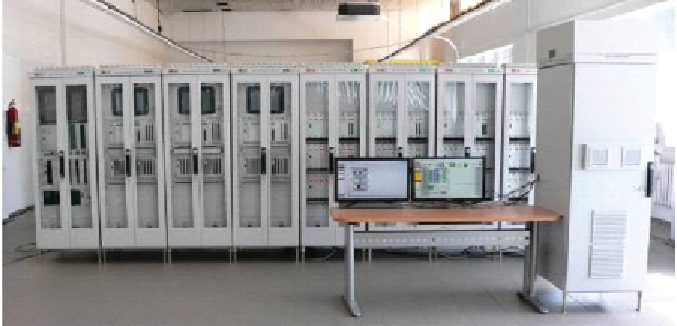Environmental Engineering Reference
In-Depth Information
From 2004 to 2012, nine Reactor Power Control
and Limitation Systems were put in operation in
Ukrainian NPPs.
Rod Control System (RCS):
The RCS (Figure
8), in general, consists of Rods Position Indication
System / Subsystem (RPIS) and Rods Drives Con-
trol System / Subsystem (RDCS) with control logic
processing equipment power supply subsystem
and also can include its own Rod Drives Electric
Power Supply Subsystem (RDEPSS) made by RPC
Radiy (or any other type of RDEPSS).
RPIS can indicate all reactor control and
safety rods position operation parameters and real
rods position. RDCS performs all Rod Drives
control functions and include Trip Portion (set of
the Rod Drives power supply breakers).
RDEPSS provides the following functions:
2oo3. Generic architecture of RCS configuration
in 1oo2 voting logic version for PWR Unit is
shown in Figure 9.
In 2012, the first full set of RCS has been suc-
cessfully put in operation in the Unit 1 of the
South-Ukrainian NPP with WWER-1000 PWR-
type reactor.
Engineered Safety Features Actuation System
(ESFAS):
The ESFAS (see Figure 10) produced by
RPC Radiy executes the following main functions:
• Protection, interlocking and monitoring of
the automated operation of actuators.
• Automatic process control.
• Manual remote control of actuators.
The ESFAS also provides the implementation
of functions that are necessary for NPP safety:
• Uninterrupted electric power supply of
Rod Drives in normal operation mode.
•
Information and data acquisition.
•
Switching of the Rod Drives electric pow-
er supply by Emergency Protection (EP)
signals in case of normal operation failure
which requires placing the reactor into a
subcritical state.
•
Signal conditioning and control of safety
signals, detectors, and sensor.
•
Full-scope systems diagnostics.
The following design principles are applied
in the ESFAS:
RCS can have 2 or 3 redundant channels de-
pending on the design basis of the nuclear reactor,
and it can implement a voting logic of 1oo2 or
• Diversity of input signals (e.g., current,
voltage, resistance, “dry contact”).
Figure 8. Rod control system

Search WWH ::

Custom Search